This is the time of year when people share memes about “False Spring,” and other micro-seasons, as one season transitions to another in fits and starts, and coquettish charades. It happens every year; it’s never the same. I remember the last year we “didn’t have” a spring, or rather had a rainy one; this year, it’s been brutally windy, following the adage of March, “in like a lion, out like a lamb.” And yet, it surprises many people, who apparently want the seasons to fade like a gradient, barely noticeable, until we wake one morning and everything has changed.
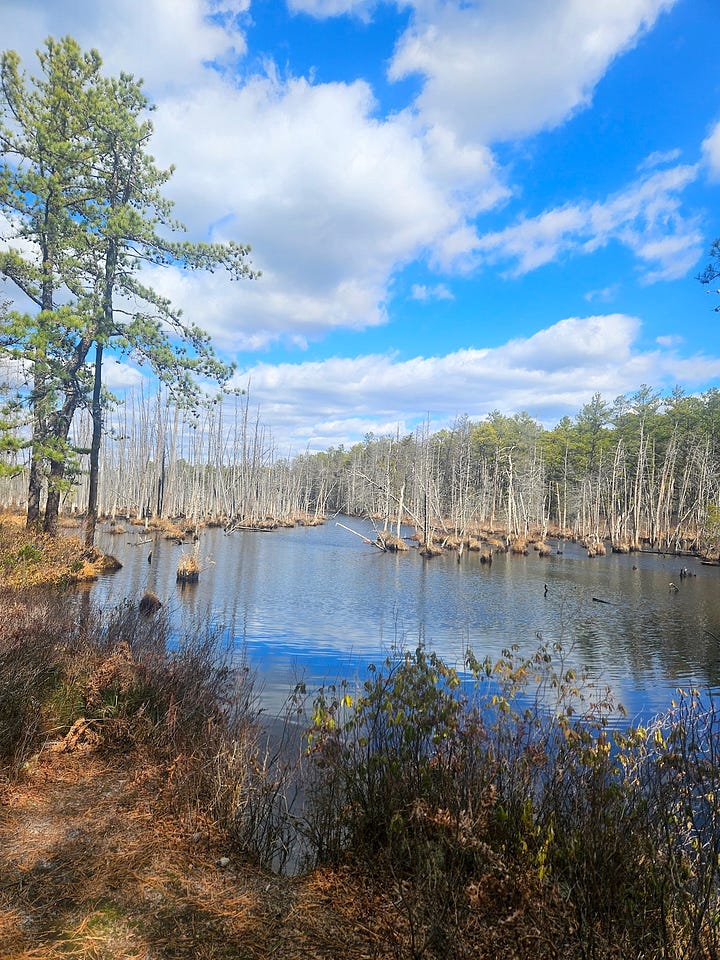
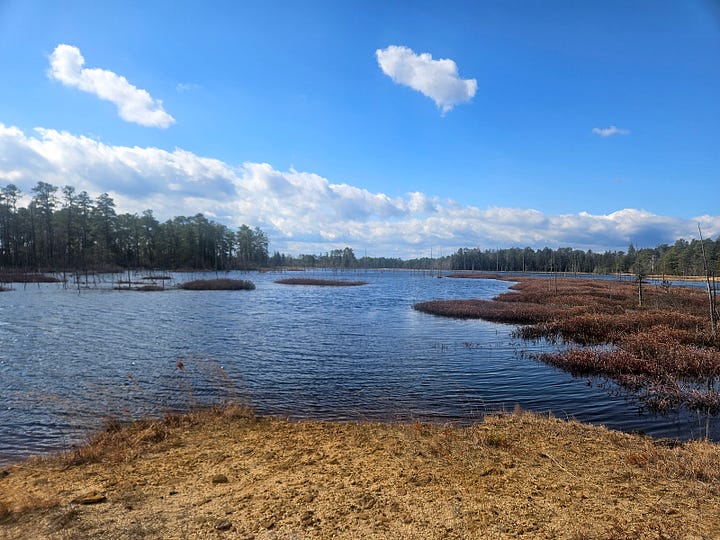
How is it that humans have been taught to believe that everything is just one thing? I have a few theories, and one of them is that people who see everything in black and white are easier to control. Let winter play at being spring for a while; let spring flirt with being winter. It’s a metamorphosis; winter is shedding its coat for the pastel butterfly wings of spring. And we’re all inside its cocoon! The thrashing of limbs and fluids isn’t hidden from us by a crackly shell.
Coming back to not being “just one thing,” female Mallards have been known to transition to male. They only have one ovary, and if it is damaged, or if a duck ages and stops producing hormones, she will become male. It’s not terribly uncommon to see intersex Mallards that show both male and female plumage, and once the transition is complete, the male Mallard can breed and fertilize eggs. So, if you think Mallards are dead common and boring, this gives you a reason to observe every one carefully; sometimes you see hybrids, that have bred with domestic farm ducks, and maybe you’ll see one that’s intersex.
Coincidentally, the last book I read was Paul Takes the Form of a Mortal Girl by Andrea Lawlor, about a young gay man who who can change his gender at will, a working class flaneur version of Virginia Woolf’s Orlando, who comes of age in the early ‘90s. It’s funny and sharp, sexy and smart, and captures how it feels to never really fit in anywhere, even among people who are supposed to be your people, and the perils of being oh-so-clever, but not clever enough to turn that eye upon yourself.
Spring is fluttering her wings, and will soon be here. Last week, I shared that I saw my first Eastern Bluebird; this week, an American Goldfinch graced my backyard. The Redwinged Blackbirds are back in force with their fierce little songs; I saw many of them on a walk with the Philly Queer Birders, at the Discovery Center in Fairmount Park. I caught my first glimpse of Ruddy Ducks—with their sublime teal bills—through a generous birder’s spotting scope. They have greaser cowlick tails that make a Northern Pintail’s look positively elegant in comparison.
I didn’t get any pictures of the Ruddy Ducks, but we saw Baltimore Oriole nests, left for the winter, that will be inhabited when they return. And I love Redwinged Blackbirds, no matter how common they are. I tend to like brash, colorful birds like Blue Jays, and Downy Woodpeckers. We saw quite a few Downys as well, little bombers dashing close above our heads.
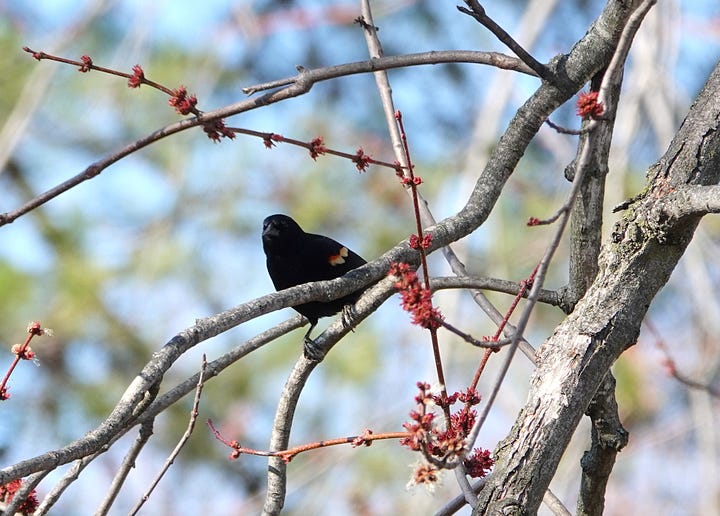
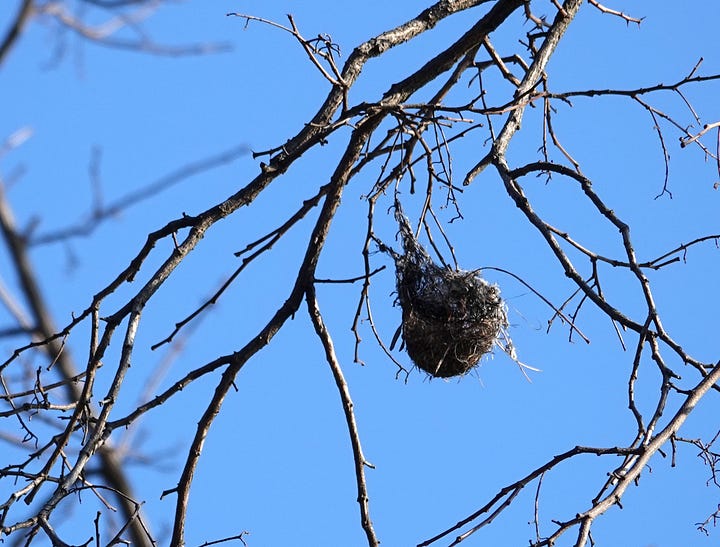
My last bike ride was to Franklin Parker Preserve, which is still suffering from the drought. The Cedar swamp still has water, but many of the unused cranberry bogs are now dry, so no Egrets or Herons. I heard Bluebirds, but didn’t see any. I decided to follow a different trail, bushwhacking a bit, pushing my luck. I had to carry the bike over a stream and get my shoes muddy, but I was rewarded by seeing a Redtailed Hawk swooping low, up close. I forget how big they are, until I see them up close.
Closer to home, I saw Wood Ducks swimming at Timber Creek on Friday afternoon. Usually, I only see them in flight, fleeing from me. I was thankful for the new binoculars. There was only one pair of Common Mergansers left, but I spotted three Great Blue Herons, also in flight. Usually there’s just the one, hunting. Here’s hoping the creek can sustain more, as the Belted Kingfisher hasn’t been around for a few weeks. I’m guessing it’s off guarding a nest in a more secluded spot. I’ve been pretty close to herons, as you can see below, but they never cease to intrigue me.
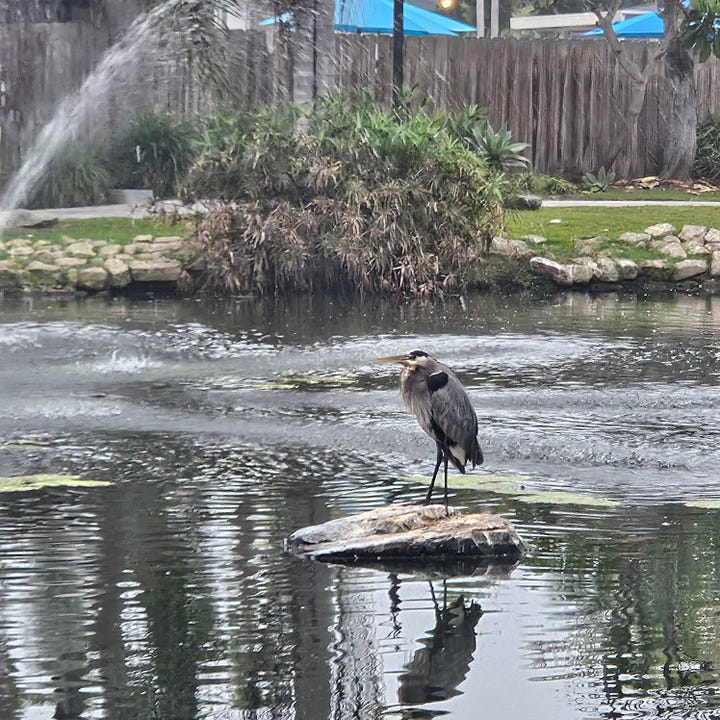
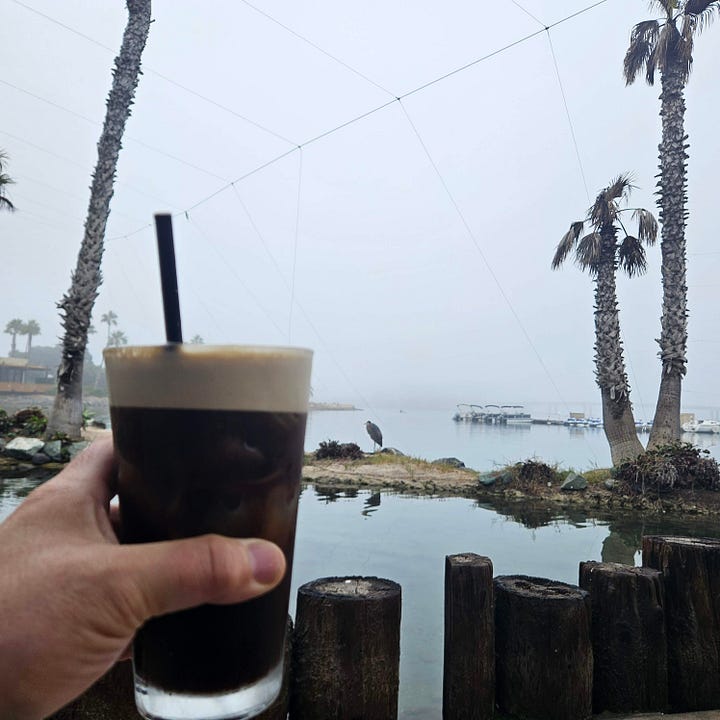
The Cooper’s Hawk returned to the yard today as well, and I’m beginning to think one stops by every day. Or maybe, that there’s a pair. Today, one made a few calls before landing, which isn’t normally what you do when looking for a birdy snack. But perhaps he was calling for his slightly larger mate. I’ve seen Cooper’s Hawks in this tree often enough to tell that this one was smaller than the big girl who swoops in sometimes. So, I’m gonna call them the Coopers, and assume they moved in nearby. As much as I like the songbirds who visit, I’m hoping I get to see the Coopers have dinner, sometime. Especially if they snack on Grackle or Starling.
Another sign of impending spring is that the ground bees are out and about, hacing dug their way out of their underground burrows. The majority of pollinating bees are of this variety, not the hive kind we know so well for their tasty honey. I was stung by one a few years ago, after stepping on its home. It was a mild sting, and I’m not allergic. I didn’t realize where it came from until the hike back, where I saw all these holes in the trail. I also saw wintergreen, which oddly enough is only common here once winter begins to fade.
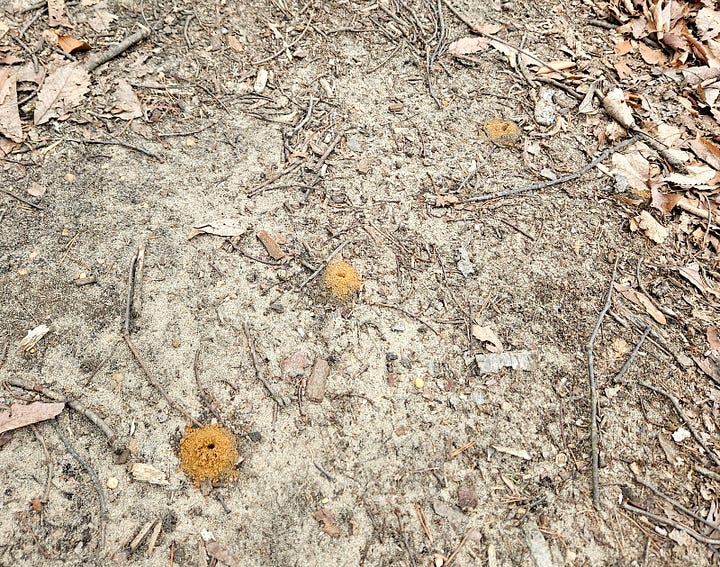
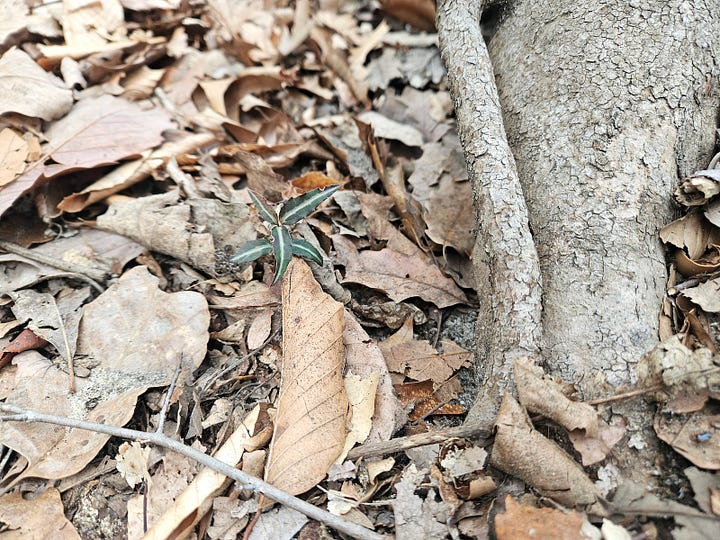
That’s all I got this week. Here are some things I’ve read and enjoyed.
You don’t pay enough attention to snails. This was a great read (and view) by Sydney Michalski, about the snails along her beach. I sometimes go say hello to the little snails who climb my fence when it rains. I’ll try to identify them, the next time I see them.
Bill Davison says in prettier words than I’ve been able to conjure lately, what I’ve been saying bluntly… go the hell outside. Put down your phone. Watch the snails. Listen to the birds. Watch out for dog shit.
Antonia Malchik is always worth reading. If you won’t subscribe to her newsletter, I’ll just have to share them all here.
Earth Hope says it all in the title. Amanda Royal writes about how we change the world, and how we keep ourselves from breaking. (And from breaking our ankle while looking for beautiful endangered plants.)








Red-winged Blackbird is such a welcome soundtrack this time of year. I think Ruddy might be the most thrilling duck.
We've got a good number of the male Red-winged Blackbirds up here now in Ottawa. I've really missed their signature call. I imagine the females will be arriving in the next 2-3 weeks.
Hopefully you get to see more of the Coopers as well!